Wat Leu
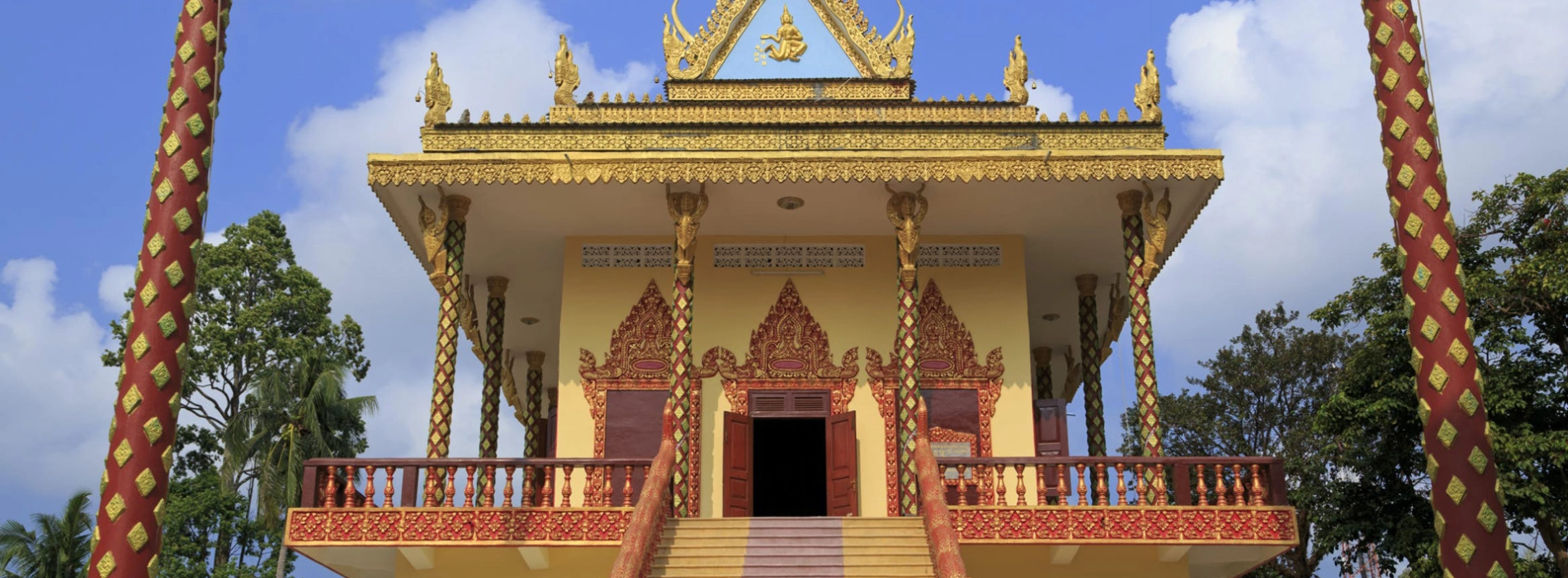
Wat Leu Pagoda, situated on a hill overlooking Sihanoukville, Cambodia, is a revered Buddhist temple offering visitors a unique blend of cultural richness and scenic beauty. The pagoda holds significance as a spiritual center for both locals and tourists, serving as a place for worship, meditation, and cultural exploration. Its traditional Khmer architecture showcases intricate designs and vibrant decorations, creating a visually appealing and culturally immersive experience. Wat Leu provides an opportunity for visitors to engage with the local community, observe Buddhist rituals, and interact with resident monks. Beyond its spiritual aspects, one of the highlights of a visit to Wat Leu is the breathtaking panoramic view it offers of Sihanoukville and the Gulf of Thailand. Wat Leu Pagoda stands as a tranquil haven where cultural enrichment and natural beauty converge, making it a must-visit destination in Sihanoukville.
Buddhist temples in Cambodia, including Wat Leu, often have roots dating back centuries. Many were constructed during the Khmer Empire, a powerful civilization that flourished in Southeast Asia from the 9th to the 15th centuries. These temples served as religious and cultural centers, reflecting the influence of Hindu and later Buddhist traditions.
Wat Leu Pagoda, like many other temples in Cambodia, likely has a history that involves periods of construction, destruction, and restoration. Temples often play a crucial role in preserving cultural identity and spiritual practices, and they continue to be important centers for religious activities and community gatherings.
The architecture of Wat Leu Pagoda, like other Khmer temples, reflects the deep cultural and religious roots of Cambodia. Visitors to Wat Leu can appreciate the blend of symbolism, spirituality, and artistic expression embodied in its architectural elements.
Roof Tiers: Traditional Khmer temple roofs are characterized by multiple tiers, often adorned with decorative finials. The layers of the roof symbolize the celestial realms and reflect the influence of Hindu cosmology.

The roof is decorated with unique details
Gable Pediments: Gabled pediments, or triangular shapes at the ends of the roofs, typically display intricate carvings depicting scenes from Buddhist or Hindu mythology. These carvings often include depictions of gods, celestial beings, and mythological creatures.
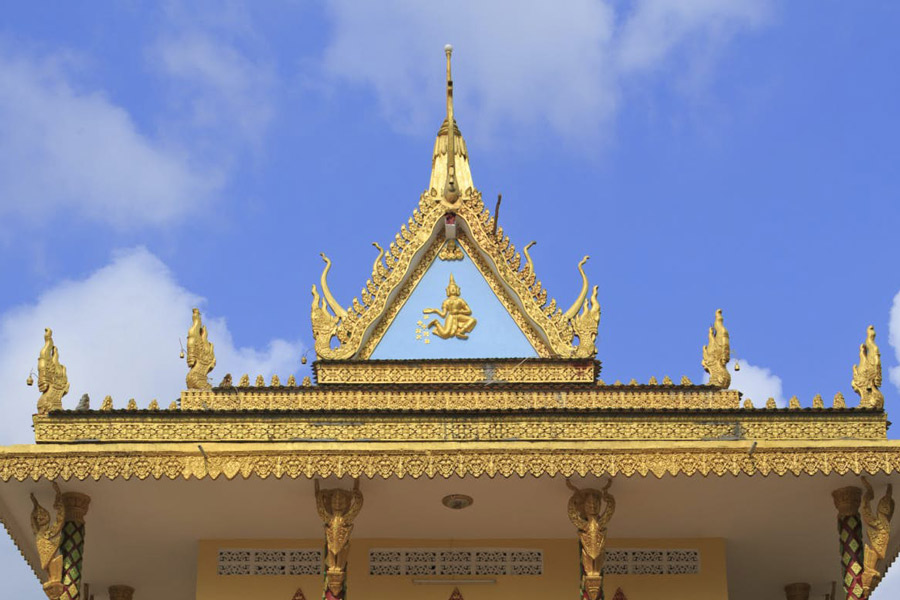
These triangular structures are notable for their intricate carvings and bas-reliefs.
Nagas and Garudas: Nagas (serpent-like beings) and Garudas (mythical bird-like creatures) are commonly featured in Khmer temple architecture. These sculptures and carvings are symbolic and hold significance in both Hindu and Buddhist traditions.
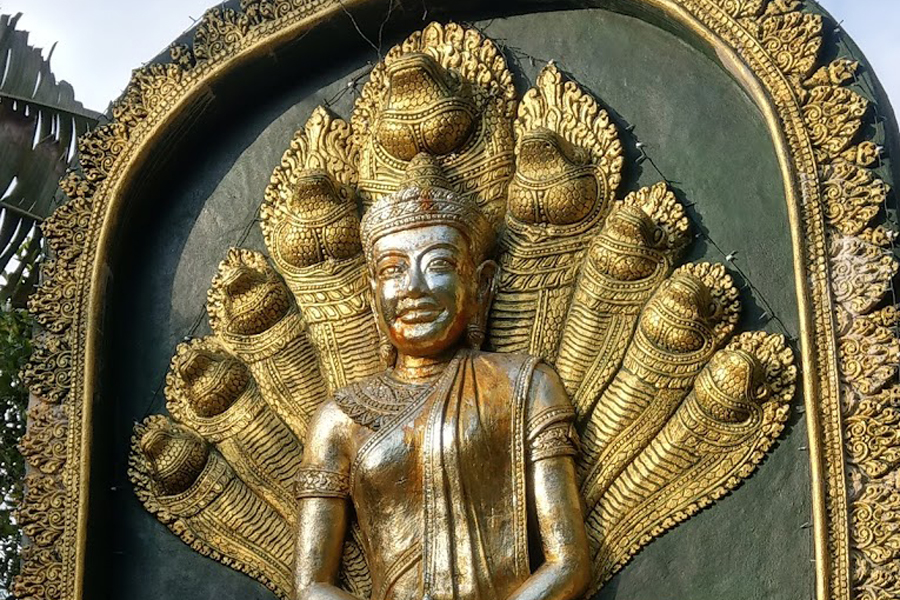
Sculptures of Nagas and Garudas hold cultural and symbolic significance
Decorative Motifs: Elaborate decorative motifs, including floral patterns and intricate reliefs, adorn the walls and columns of the temple. These details showcase the artistic and craftsmanship skills of Khmer artisans.

The temple gate is decorated with beautiful motifs
Courtyard and Stupas: Wat Leu may have a courtyard with surrounding stupas, dome-shaped structures containing relics or serving as memorials. Stupas are important elements in Buddhist architecture and are often revered as sacred monuments.
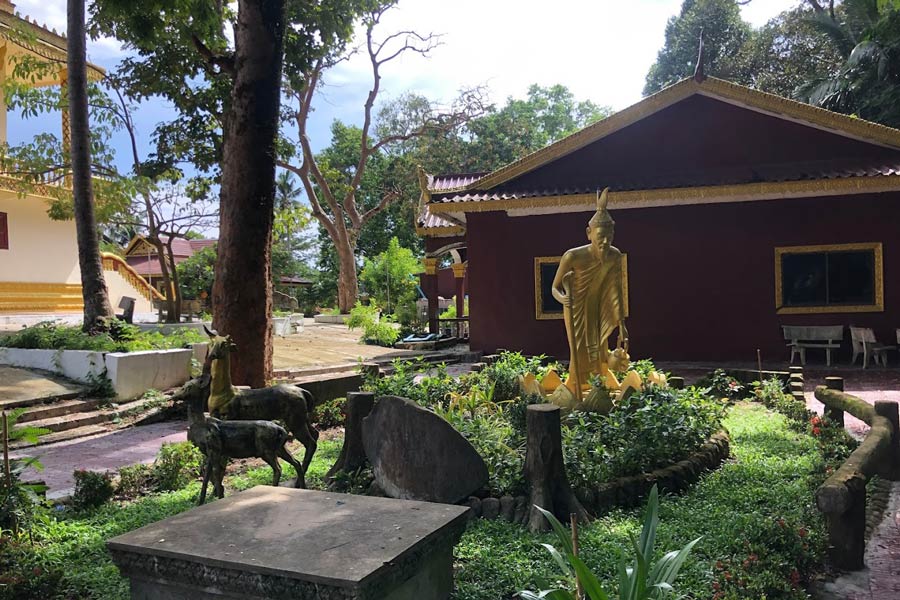
The observing the design brings understanding of the temple's religious
Ubosot (Ordination Hall): The main hall, known as the ubosot, is where important religious ceremonies and rituals take place. It may contain an altar, Buddha images, and murals depicting stories from Buddhist scriptures.
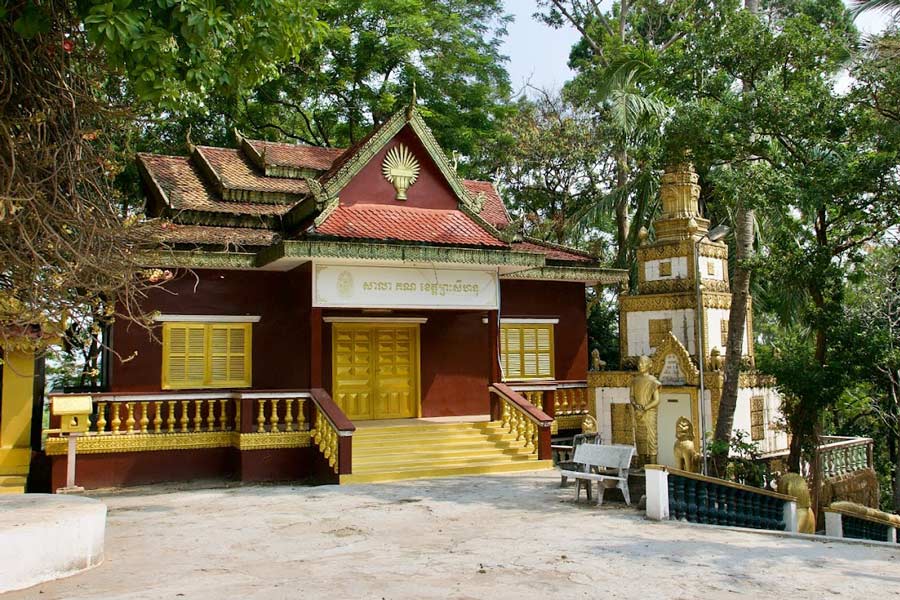
The ubosot serves as the main hall for significant religious ceremonies and rituals.
Colorful Paintings: Interiors of the temple may feature colorful paintings depicting Buddhist teachings, historical events, and the life of the Buddha. These paintings contribute to the visual richness of the temple's interior.
Wat Leu Pagoda welcomes visitors with open arms, offering the opportunity to explore its serene grounds at any time of the day. The temple embraces a policy of free admission, inviting individuals to experience its cultural and spiritual richness without any cost. This open-door policy allows guests to immerse themselves in the tranquil atmosphere, appreciate the architectural beauty, and partake in the spiritual ambiance at their convenience, all without the need for a ticket.
The best time to visit Wat Leu Pagoda in Sihanoukville is during the dry season from November to April, providing clear skies and comfortable temperatures. However, if you prefer a quieter experience and don't mind occasional rain, the shoulder months of May, June, September, and October offer fewer crowds and lush greenery. Always check current weather conditions for accurate planning.
By Tuk-Tuk or Taxi: Tuk-tuks and taxis are common modes of transportation in Sihanoukville. You can hire a tuk-tuk or taxi to take you directly to Wat Leu Pagoda. Negotiate the fare before starting your journey.
By Motorbike: Renting a motorbike is a popular option for independent travelers. You can navigate your way to Wat Leu using GPS or a map. Motorbike rentals are available in Sihanoukville.
By Walking or Hiking: Depending on your location in Sihanoukville, you may be able to walk or hike to Wat Leu if you enjoy exploring on foot. Keep in mind that the temple is situated on a hill, so be prepared for an uphill walk